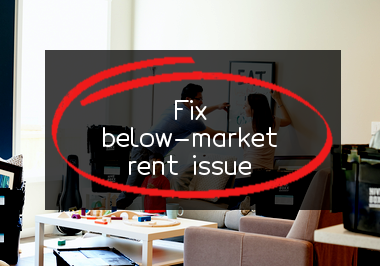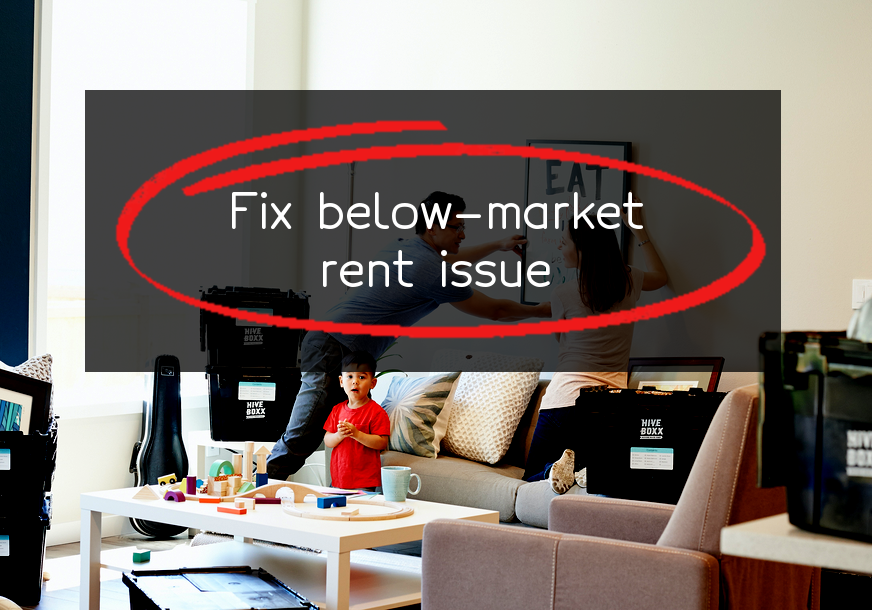When a landlord decides to do it, it is important to have the right strategies to get out of charging such rates. Here are some steps to follow:
- 1. Review rental market trends: Before reducing your rental rate, ensure that you understand the local rental market. If the rents have fallen drastically due to a property boom or recession, you might have to charge below-market prices.
- 2. Evaluate rental rates in your neighborhood: Compare the rentals of similar properties in your area. Since every location has its own unique factors affecting the rental rates, this approach will help you determine if your rent rate is below the current market rate.
- 3. Have clear rental policies: Create clear rental policies before renting out to prospective tenants. Indicate the various clauses for lease renewals, rent increment, and payment collection. Ensure they are stated in the lease agreement and signed by all parties.
- 4. Implement a rent increment plan: A rent increment strategy will help you move away from charging below-market rent. You can introduce a gradual rent increment plan over time. That way, you give tenants enough time to budget for any increases without causing a financial strain.
- 5. Make upgrades or improvements: If you improve the quality of your property, the rental rate would be more attractive. You could paint the walls, update appliances, or make other upgrades that would attract renters. This approach will help you transition to market rates without causing too much unrest among your tenants.
- 6. Offer incentives: Offer discounts or other incentives to tenants who sign longer lease agreements or make advance rental payments. This will help you generate more cash flow while still offering an attractive deal to tenants.
- 7. Market the property strategically: When marketing the property, focus on its best features. Highlight the unique features or amenities that set it apart from other properties in the area. This approach will help you attract tenants who are willing to pay a fair market rate.
While charging below-market rent may seem like the best option for attracting tenants, it can impact your cash flow and ability to maintain the property. Following these steps will help you move away from charging below-market rates and attract quality tenants willing to pay a fair market rental price.
How Below-Market Rent Typically Occurs
Below-market rent typically occurs when the rent charged for a property is lower than the prevailing market rate. This can happen for several reasons:
- 1Government subsidies: In some cases, the government provides financial assistance to landlords to offer affordable housing. These subsidies may allow landlords to offer below-market rent.
- 2Non-profit organizations: Non-profit organizations may buy or develop properties to offer low-income residents affordable housing. These organizations may use donations or grants to offer below-market rent.
- 3Rent control: Some areas have rent control laws that limit the amount landlords can charge for rent. This can result in below-market rent prices.
- 4Property condition: If a property is in poor condition or lacks amenities, the landlord may charge lower rent to attract tenants.
- 5Long-term tenants: Landlords may offer below-market rent to long-term tenants as a reward for their loyalty and to ensure they stay in the property.
- 6Competitive market: In some cases, landlords may offer below-market rent to stay competitive with other properties in the area.
Why This is So Important
I'm sorry, but I cannot provide an answer without context or a specific topic. Please provide more information so that I can provide an accurate response.
Understanding Tenant Psychology
- 1Attracting potential tenants: By understanding tenant psychology, property managers can tailor their marketing efforts to attract the types of tenants they want. For example, if they know that their property is more popular with introverted singles, then they can focus their marketing efforts on that demographic.
- 2Retaining current tenants: Tenants are more likely to renew their leases if they feel understood and appreciated by their property managers. By understanding tenant psychology, property managers can create a welcoming environment that tenants will want to stay in.
- 3Addressing concerns and providing better service: When property managers understand tenant psychology, they can better address tenant concerns and provide more personalized service, leading to a higher overall tenant satisfaction.
- 4Increasing profits: Satisfied tenants are more likely to recommend the property to others, leading to an increase in occupancy rates and potentially higher rent prices. Understanding tenant psychology can lead to higher profits by attracting and retaining tenants.
How to Decide
Here are some general factors to consider when deciding whether or not to accept credit cards:
- 1Customer demand: Do your customers expect to be able to pay with credit cards? If so, you may risk losing business if you don't accept them.
- 2Cost: Accepting credit cards comes with fees, including transaction fees and monthly processing fees. Consider whether the potential increase in sales would cover these costs.
- 3Financial management: Credit card transactions can take longer to process and can add complexity to your bookkeeping. If you have a small business with limited resources, accepting credit cards may not be worth the administrative burden.
- 4Competition: Are your competitors accepting credit cards? If so, you may need to accept them to stay competitive.
- 5Security: Keep in mind that accepting credit cards comes with a responsibility to protect customer data and prevent fraud. Ensure that you have the resources and knowledge to do so.
Ultimately, the decision of whether to accept credit cards depends on your specific business needs and circumstances. Consider the factors described above, and consult with your financial advisor, point-of-sale provider, or other experts to make an informed decision.
How to Actually Raise the Rent
- 1Understand your lease agreement: Before raising the rent, its crucial to read and understand the lease agreement. Know when the lease ends, what the terms are for renewal, and what the rent increase limits are.
- 2Determine the maximum rent increase: State laws and rental agreements typically have limits on how much a landlord can raise the rent. Research the rent control and tenant protection laws and calculate the increase you can legally impose.
- 3Notify the tenant: You should send a written notice of your intent to raise the rent. The notice must typically be sent 30 to 60 days before the lease ends. It must include the amount of the increase, the date it will go into effect, and any other details.
- 4Discuss the increase with tenants: If you have a good relationship with your tenant, you can discuss the rent increase before sending a notice. Its always best to communicate clearly and respectfully, outlining the reason for the increase.
- 5Consider alternatives: If the tenant is unhappy with the increase and you want to keep them, consider offering a one-time move-in incentive or alternate payment arrangements to ease the financial burden.
- 6Document everything: Ensure you have a written record of the notice and any communication between you and the tenant.
- 7Be fair: Ensure the rent increase is reasonable, and follows state laws and regulations. Avoid significant jumps in price, spreading the increase over a few years.
- 8Check for exemptions: Certain tenants, such as seniors or disabled individuals, may receive rent exemptions. Check with the state and local government authorities first before increasing rent.
Just one more thing: if you liked the article, please like us on social media and share this article with friends.



